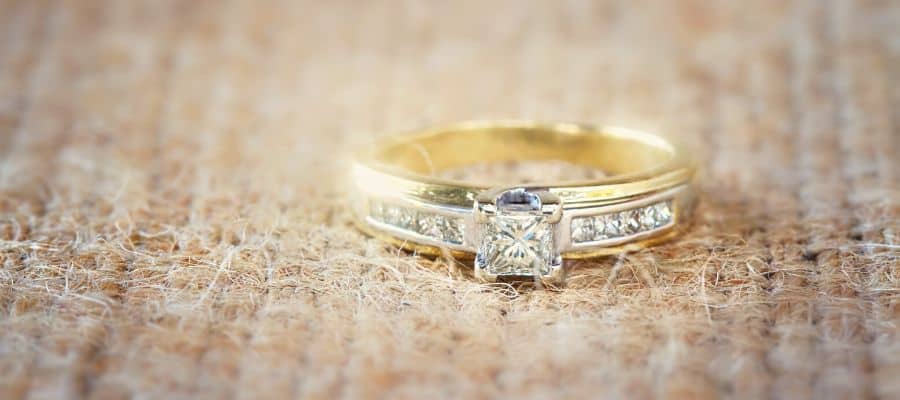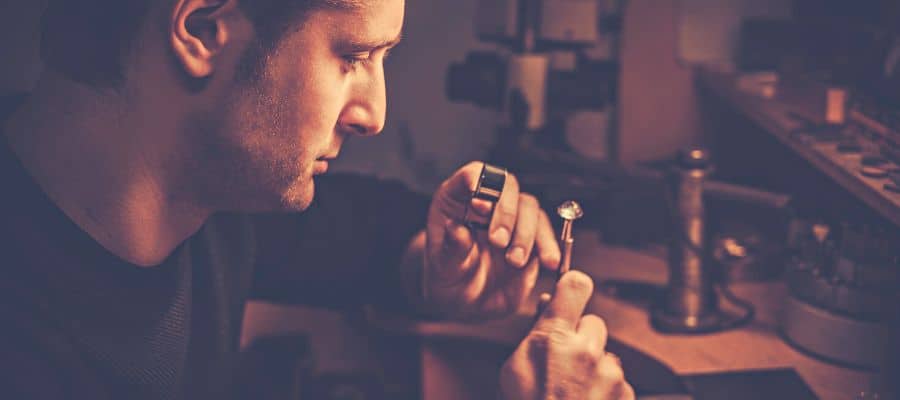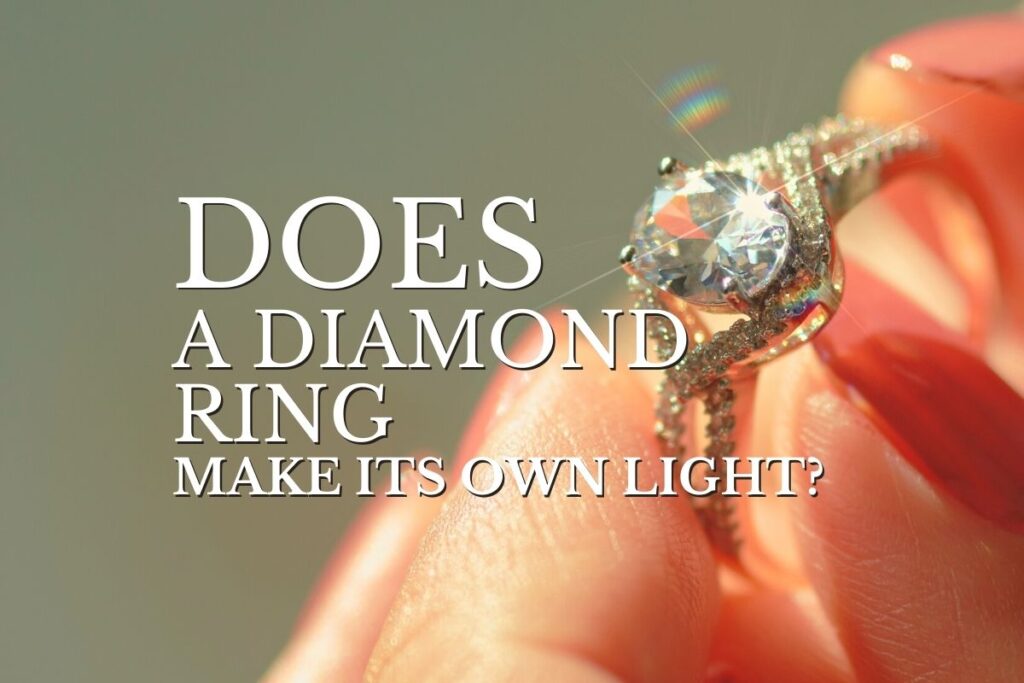Holding a diamond ring in your hand, you’ll notice it sparkles. You twist it this way and that, and the fragments of light move around, creating a web of sparkles. You can’t help but wonder, do diamonds make their own light?
Diamonds don’t make light. Instead, the sparkling effect results from light shining through the diamond. The light bounces within the stone’s internal mirrors and sends fragments of light out of its facets. This is why you see rainbows when holding a diamond up to the sunlight.
This article will explain further why diamonds seem to shine independently, with the help of science.
How Diamonds Shine

Diamonds shine because of light shining through the stone. The light bounces around within the stone, fragmenting rays of light. It doesn’t create a new light.
When light hits a diamond, three things happen:
- Internal reflection
- Refraction
- Dispersion
Internal Reflection
In total internal reflection, a ray of light hits the medium and bounces from it. In this case, a beam of light hits the diamond and bounces out of it in fragments.
Think of the several angled surfaces on a diamond like a mirror. Because there are so many mirror-like surfaces within the diamond, a ray of light will bounce around hundreds of times. So as you twist the diamond around, its appearance will alter.
In total internal reflection, all the light bounces within the diamond. All the light is 100% reflected at a particular angle and does not escape the diamond.
A diamond is similar to a glass prism. If you remember experimenting on triangular prisms in middle school, you’ll recognize the similar patterns of light passing through a glass prism in a diamond. When light hits a triangular prism, it breaks the light into a rainbow. If you hold a diamond up to the sunlight, you’ll notice several fragments of rainbows on the ground.
Refraction
In refraction, the light bounces back within the diamond, and the rest shines through. Since there are several facets in a diamond, plenty of light will bounce within the diamond.
When lots of light come into the diamond, the diamond’s facets break the stream of light into multiple streams. That’s why you see fragments of rainbows when you hold a diamond up to the sunlight.
Dispersion
In dispersion, this measures how far apart red and violet light will be after the refraction of light.
Confused? Think back to middle school science class. When you hold a prism to the light, it becomes a rainbow, right? That’s called dispersion. The ray breaks down into:
- Red
- Orange
- Yellow
- Green
- Blue
- Indigo
- Violet
When making a diamond, scientists measure how far apart the rainbow extends after being refracted through the prism.
If dispersion is low, the rainbow squishes together, causing the diamond not to sparkle much. Conversely, the rainbow would be more expansive if dispersion was high.
Can Diamonds Glow in the Dark?

The short answer is that it depends.
The long answer is; Diamonds are also measured by fluorescence, a blue glow only seen under ultraviolet light. However, fluorescent diamonds make up only 30% of all diamonds, ranging in intensity.
Fluorescence is measured by intensity. Diamonds’ intensity could be labeled as:
- None
- Faint
- Medium
- Strong
- Very Strong
Daylight already provides ultraviolet light, so this is another way to explain how diamonds shine. However, the appearance of diamonds will look different because of the level of fluorescence. For example, blue fluorescents will make a yellowish diamond look whiter.
Sunlight is too weak to determine a diamond’s fluorescence. Although, diamonds with a very high fluorescence will glow a faint blue in direct sunlight.
Under direct UV light, very high fluorescent diamonds will glow in the dark.
How Do Jewelers Examine a Diamond’s Luminosity?

Diamonds’ luminosity is measured by brilliance, fire, and scintillation. Jewelers will use these three elements to analyze and prepare a diamond with the highest brilliance.
Brilliance is the diamond’s ability to reflect white light. If the diamond sparkles in a dimly lit room, it has a higher brilliance. Lower-brilliance diamonds appear dim and dull, even in brighter lighting.
Fire is how well the diamond reflects colored light. A good level of fire is shown by a rainbow appearance when the diamond shines. The diamond will only refract light if it is shallow or deep of a cut.
Finally, scintillation is how well the light passes through the diamond in motion. If the diamond has a high scintillation level, it will have plenty of sparkles reflecting all of its facets or angled surfaces.
What Is the Most Brilliant Diamond?

The most brilliant diamond known in the world is the round brilliant cut. These diamonds have 58 facets, allowing the most light to pass through, creating an extensive amount of sparkles.
In 1919, Marcel Tolkowsky, an engineer and diamond cutter, developed a mathematical formula for the highest diamond brilliance possible. His formula led to the invention of the round brilliant-cut diamond, which is now one of the more popular choices for engagement rings.
How To Determine a Diamond Is Real by Its Shine
One way to check if your diamond is real is by analyzing its sparkle and how light reflects off the facets.
Hold your diamond up to the light. Do the rainbow colors seem vibrant? Of course, real diamonds are brilliant, but the rainbow colors should have a muted tone.
If your diamond’s sparkle appears too vibrant, it could be cubic zirconia. Cubic zirconias are fake diamonds, though they seem similar to natural diamonds.
Conclusion
Diamonds are one of the most fascinating stones in the world. They are a science phenomenon in itself, with the way that light breaks into fragments and rainbows simply by holding them up to the sunlight or shining a ray of light upon them.
The different ways that diamonds shine is a fascinating concept that only science can explain. Likewise, it can be challenging to understand, but the short answer is that diamonds appear to radiate because of the way light reflects within the stone.
If you found this article useful, make sure you save this pin below to your Jewelry board.


